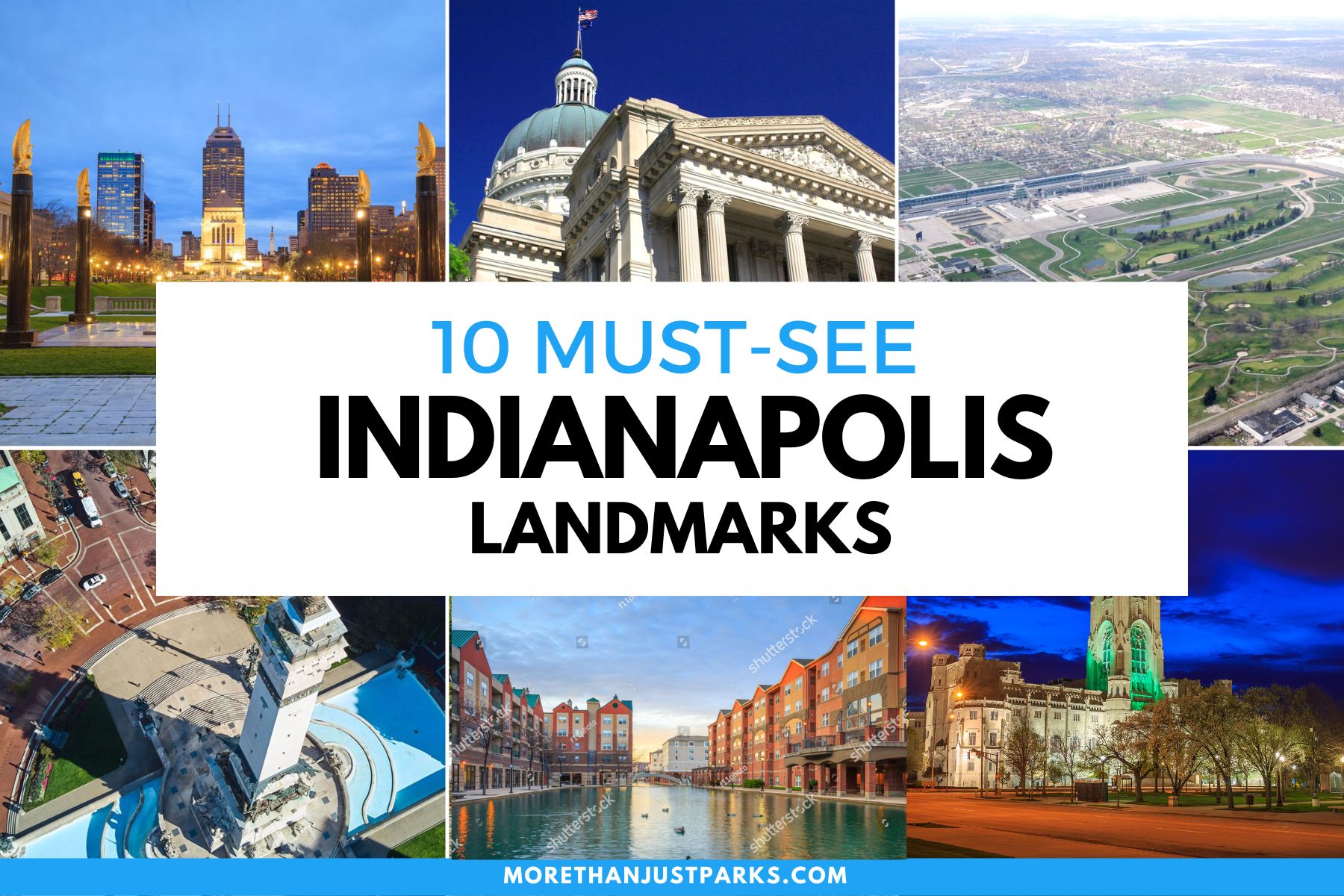
Article Summary: Indianapolis Landmarks
Indianapolis Landmarks. More Than Just Parks has 10 incredible must-see sites for you to visit.
There’s so much more to this exciting place than the Indianapolis Colts. In this article, we’ll familiarize you with the incredible landmarks located in Indianapolis.
We’ve got incredible places, iconic memorials, fascinating museums, epic monuments and so much more.
We’re going to give you our list of the Top 10 Landmarks In Indianapolis.
So, What Is A Landmark?
Well, it’s a place of “a special character or special historical or aesthetic interest or value as part of the development, heritage, or cultural characteristics of a city, state, or nation.”
Why visit these places? Because landmarks connect us to the past. Through visiting these wonderful places where history occurred we find our roots. It allows us to feel like we are a part of something much bigger than ourselves.
And, speaking of history, did I mention that I taught the subject? I spent a lifetime teaching about the history behind many of these amazing sites. Then I got to see them firsthand. And now I’m sharing the fascinating stories of these places with you. It doesn’t get any better than that!
So, without further ado, let’s dive in.
Table Of Contents
Indianapolis Landmarks
Fascinating Facts About Indianapolis
Here’s some interesting facts about Indianapolis:
- Indianapolis is the capital city of the U.S. state of Indiana, located in the Midwestern region of the country.
- The city was founded in 1821 and named after the Delaware River’s Indiana tribe.
- Indianapolis is home to the Indianapolis Motor Speedway, which hosts the famous Indy 500 car race every year.
- The city’s downtown area is known for its unique layout, with a central monument circle that serves as a hub for five streets that radiate outward.
- Indianapolis is also known for its extensive park system, which includes the White River State Park, the Canal Walk, and the Eagle Creek Park.
- The city is home to several universities, including Indiana University–Purdue University Indianapolis (IUPUI), Butler University, and Marian University.
- The Indianapolis Colts, a professional football team, play their home games at Lucas Oil Stadium in downtown Indianapolis.
- Indianapolis is also known for its cultural attractions, including the Indiana Repertory Theater, the Indianapolis Museum of Art, and the Children’s Museum of Indianapolis.
- The city has a vibrant food scene, with numerous local restaurants serving everything from traditional Midwestern cuisine to international dishes.
- Indianapolis has a rich history, with important events such as the 1910 National Convention of the African American Women’s Club Movement, the Indianapolis 500 race, and the 1979 Pan American Games all taking place in the city.
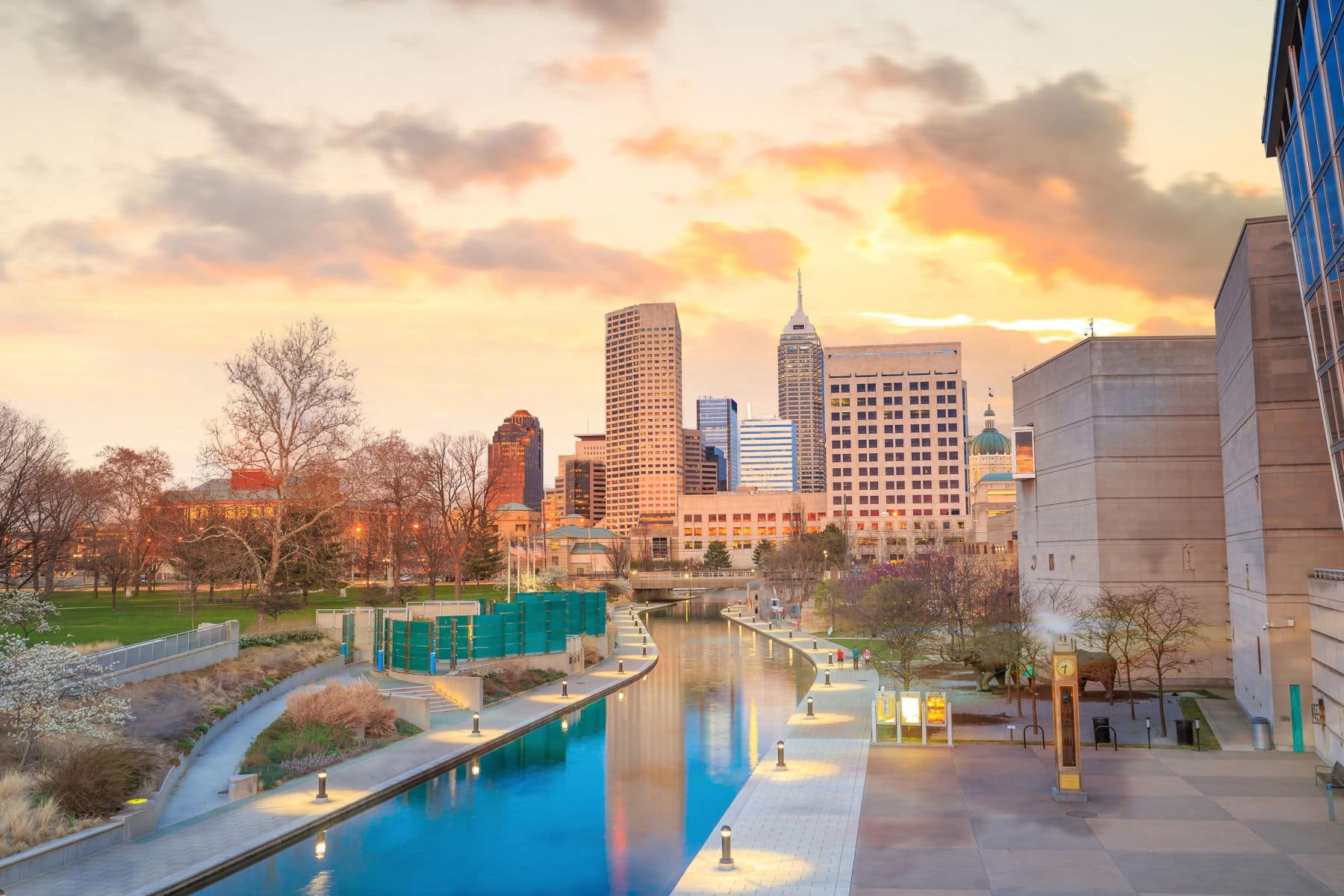
Top 10 Indianapolis Landmarks
10. Scottish Rite Cathedral
We kick-off our list of the Top 10 Indianapolis Landmarks at #10 with a historic building that has been an iconic landmark in the city since its completion in 1929.
The building was constructed as the headquarters for the Scottish Rite Masonic organization, which is a branch of Freemasonry that focuses on philosophical and moral teachings.
At #10 on our list of the Best Indianapolis Landmarks is the Scottish Rite Cathedral.
The Idea For The Scottish Rite Cathdedral
The idea for the Scottish Rite Cathedral was conceived in 1913, when the Indianapolis Scottish Rite organization began planning for a new headquarters building. The organization hired architect George F. Schreiber to design the building, which was to be constructed on a site in downtown Indianapolis.
Construction of the building began in 1927, and it was completed two years later at a cost of $2.5 million. The building’s exterior is made of Indiana limestone, and it features Gothic-style architecture with intricate details and carvings. The interior of the building is equally impressive, with a grand ballroom, a large auditorium, and ornate meeting rooms.
Over the years, the Scottish Rite Cathedral has served as a venue for a variety of events, including concerts, theatrical performances, and lectures. It has also been used as a filming location for several movies and television shows, including the 1987 film “Hoosiers.”
In 1974, the Scottish Rite Cathedral was added to the National Register of Historic Places, recognizing its architectural significance and historical importance. Today, it remains a popular destination for tourists and locals alike, and it continues to serve as a center for Masonic activities in Indianapolis.

9. Central Canal
Our next Indianapolis landmark is a man-made waterway that was originally constructed in the early 19th century as part of a larger plan to improve transportation and commerce in the city.
At #9 on our list of the Best Indianapolis Landmarks is Central Canal.
The idea for the canal was first proposed in the 1820s, when the city was experiencing rapid growth and development. The canal was designed to connect the White River, which runs through the center of Indianapolis, to the Wabash and Erie Canal, which was a major waterway connecting the Great Lakes to the Ohio River.
Construction of the canal began in 1836 and was completed in 1850, but the canal system ultimately proved to be a financial failure. It was used primarily for transportation of goods and passengers in the early years, but the rise of railroads and other modes of transportation quickly made the canal obsolete.
In the years that followed, the canal fell into disrepair and was largely forgotten. It wasn’t until the 1970s that interest in the canal was renewed, and a plan was developed to revitalize the waterway as a recreational amenity for the city.
In 1989, the Central Canal was added to the National Register of Historic Places, recognizing its historical significance as an early transportation infrastructure in the city.
Today, the canal is a popular destination for locals and tourists alike, with a 3-mile-long pedestrian and bike path that runs alongside the waterway. The canal is also home to several public art installations, including a sculpture garden and a series of murals depicting the history of the canal and its role in the development of the city.
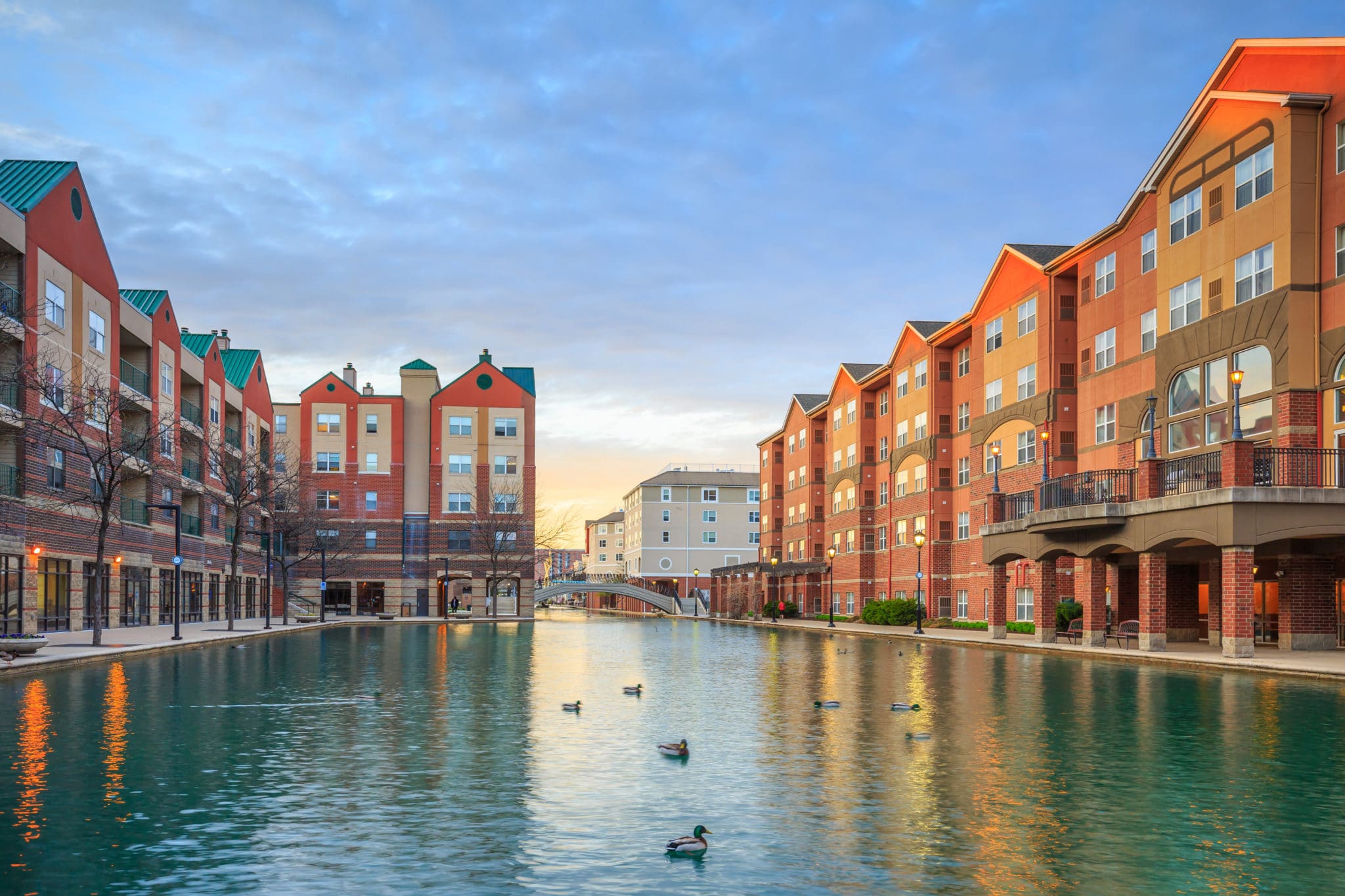
8. Benjamin Harrison Presidential Site
Our next Indianapolis landmark is a historic house museum located in Indianapolis, Indiana. The site was originally the home of Benjamin Harrison, the 23rd President of the United States, and his wife Caroline.
At #8 on our list of the Best Indianapolis Landmarks is the Benjamin Harrison Presidential Site.
The house was built in the late 19th century in the Queen Anne style, and it features many original furnishings and decorations from the Harrison family. The site also includes a carriage house, a garden, and a museum that showcases artifacts and exhibits related to Harrison’s life and presidency.
Benjamin Harrison was a prominent lawyer and politician before he was elected President in 1888. During his term in office, he signed the Sherman Antitrust Act and helped to modernize the U.S. Navy. After leaving office, he returned to his home in Indianapolis, where he continued to be active in politics and public life.
The Benjamin Harrison Presidential Site was established in the 1950s as a way to preserve Harrison’s home and legacy. Today, it is a popular tourist attraction and educational resource, offering tours, exhibits, and special events throughout the year.
Visitors to the site can explore the elegant rooms of the house, which are decorated with Victorian-era furnishings and artworks. They can also learn about Harrison’s life and career, as well as the history of the United States during the late 19th century.
The Benjamin Harrison Presidential Site is an important cultural and historical landmark in Indianapolis, and it provides a fascinating glimpse into the life of one of America’s most influential Presidents.
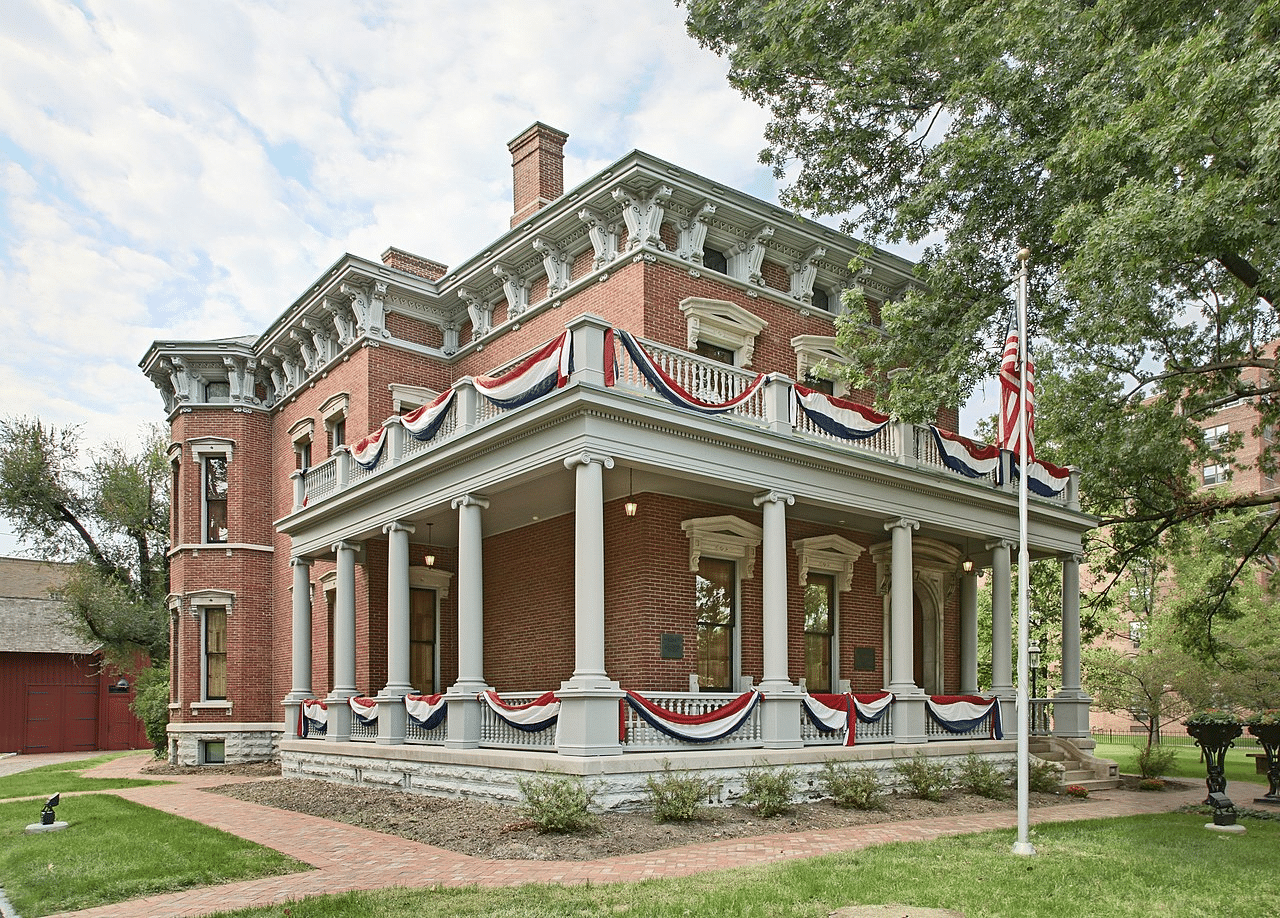
Benjamin Harrison Presidential Site | Courtesy of Wikimedia Commons
7. Union Station
Our next Indianapolis landmark was America’s first Union Station. Built at a cost of one million dollars, its Grand Hall is one of the finest public spaces in the city.
At the turn of the century, when railroading was king, some 500,000 passengers traveled through Union Station monthly. And it’s #7 on our list of the Best Indianapolis Landmarks.
Union Station in Indianapolis is a historic train station that was built in the late 19th century to serve as a hub for transportation in the city. The station is located in the Wholesale District of downtown Indianapolis and was built in the Romanesque Revival style of architecture.
Construction of Union Station began in 1886 and was completed in 1888. The station was designed by Pittsburgh architect Thomas Rodd and featured a grand entrance hall with a vaulted ceiling, marble floors, and ornate decorations.
It Served As A Hub For Several Major Railroads
The station served as a hub for several major railroads, including the Pennsylvania Railroad, the New York Central Railroad, and the Baltimore and Ohio Railroad. It was a bustling center of transportation activity in Indianapolis for many years, with trains arriving and departing regularly to cities across the country.
During its heyday, Union Station was a hub of activity, with passengers bustling through its halls, shops and restaurants providing entertainment and sustenance, and even live music performances in the grand hall. However, by the mid-20th century, the rise of automobiles and airplanes had caused a decline in train travel, and Union Station fell into disrepair.
In the 1980s, the station was restored and repurposed as a multi-use facility. Today, it serves as a venue for conventions, events, and weddings, and is also home to several shops and restaurants. The grand entrance hall has been restored to its original glory, complete with chandeliers, marble floors, and ornate decorations.
In recognition of its historical significance, Union Station was added to the National Register of Historic Places in 1982, ensuring that its unique architectural and cultural heritage will be preserved for future generations.

Union Station | Courtesy of Wikimedia Commons
6. Eiteljorg Museum of American Indians and Western Art
We’re moving on from an iconic train station to a place which celebrates the art and cultures of the American West and the Native American people. It’s the Eiteljorg Museum of American Indians and Western Art.
The museum was founded in 1989 by Harrison Eiteljorg, a businessman and collector of Western and Native American art.
The museum’s collection features over 25,000 works of art and artifacts, including paintings, sculptures, pottery, jewelry, textiles, and photographs. The collection spans from pre-Columbian times to the present day and includes works from Native American tribes from across the United States and Canada, as well as Western art from the 19th and 20th centuries.
One of the most notable features of the museum is the outdoor sculpture garden, which showcases contemporary Native American and Western art in a beautiful natural setting. The garden features works by renowned artists such as Allan Houser, Nona Hengen, and George Carlson.
In addition to its permanent collection, the museum also hosts a variety of temporary exhibits throughout the year. These exhibits focus on a range of topics related to Native American and Western art, history, and culture. The museum also offers educational programs and workshops for all ages, including guided tours, artist talks, and hands-on activities.
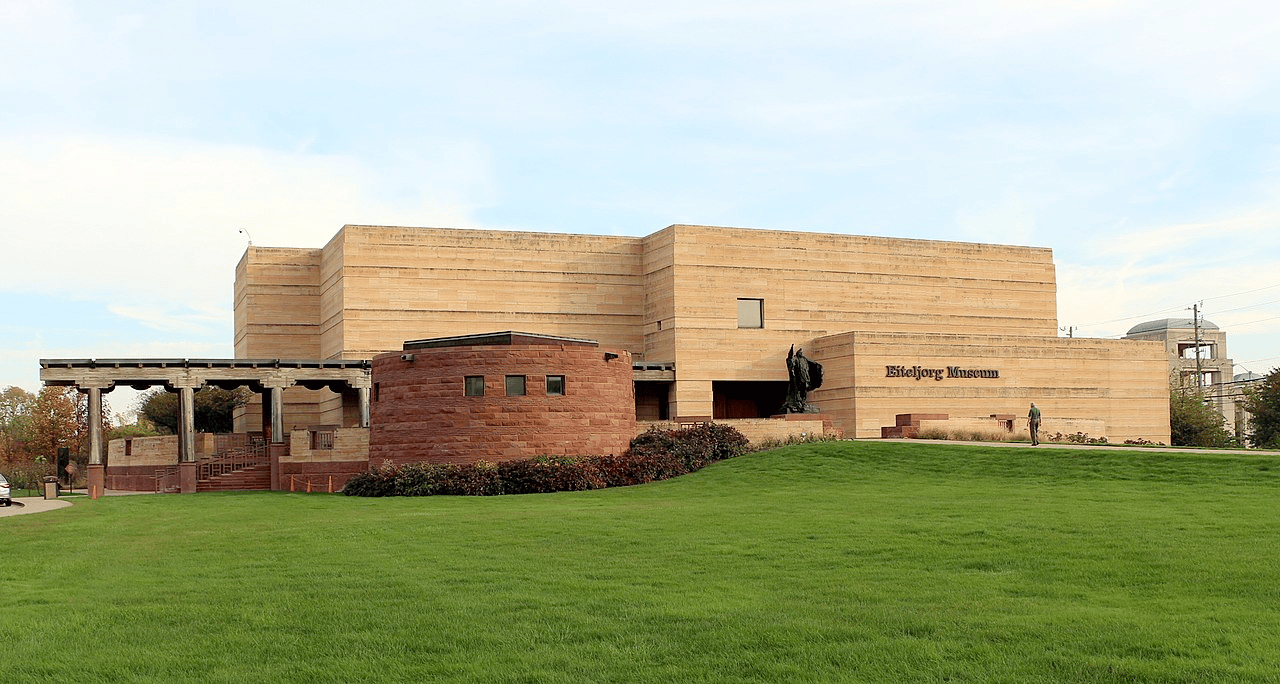
Top 5 Indianapolis Landmarks
5. Indiana State Capitol
We’re on to our Top 5 Indianapolis Landmarks. At #5 is a historic building located in downtown Indianapolis that serves as the seat of government for the state of Indiana. The building has a rich history that dates back to the early 19th century. Welcome to the Indiana State Capitol.
The original Indiana State Capitol was built in 1835 and was located on the site of what is now Monument Circle in downtown Indianapolis. The building was a simple brick structure and served as the state’s Capitol building for several decades.
As the state grew and evolved, the need for a larger and more impressive Capitol building became apparent. In 1877, a competition was held to design a new Capitol building, and the winning design was submitted by architects Edwin May and Arthur Bohn.
Construction Of The New Capitol
Construction of the new Capitol building began in 1880 and was completed in 1888 at a cost of over $1.8 million. The building features a stunning Neoclassical design, with a central dome that rises over 200 feet into the air.
Over the years, the Indiana State Capitol has undergone several renovations and restorations, with the most recent taking place in the early 2000s. The building now features modern amenities and technology, while still retaining its historic charm and beauty.
Today, the Indiana State Capitol serves as the seat of government for the state of Indiana, housing the offices of the Governor, the Indiana General Assembly, and other state agencies. The building is also a popular tourist destination, with guided tours available to the public.
In recognition of its historical and architectural significance, the Indiana State Capitol was added to the National Register of Historic Places in 1973.
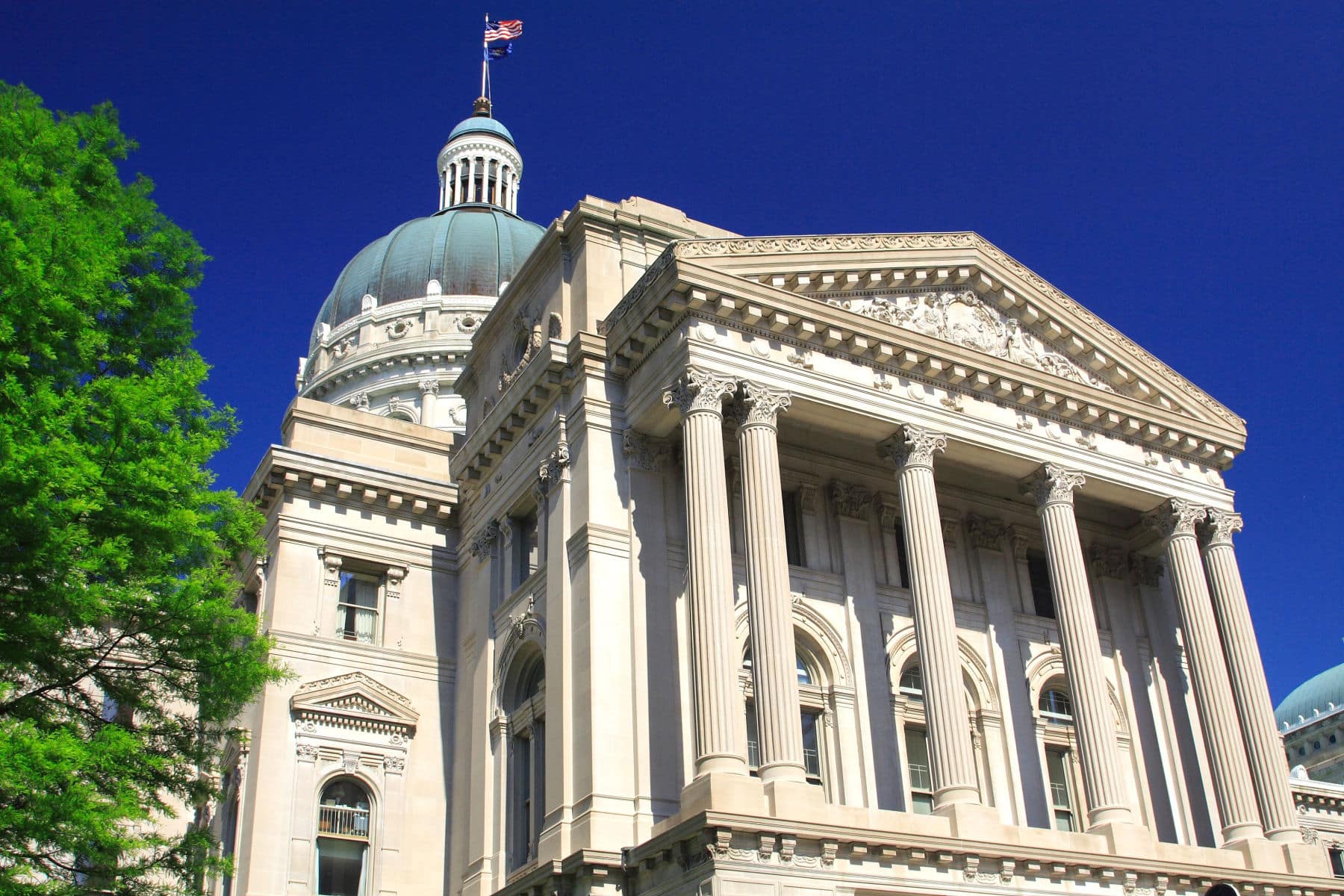
4. Monument Circle
Our next Indianapolis landmark is a prominent public gathering place in Indianapolis to commemorate notable events, including concerts, political demonstrations, and photo opportunities. At #4 on our list of the Best Indianapolis Landmarks is Monument Circle.
Monument Circle is an iconic landmark located in the heart of downtown Indianapolis, Indiana. The Circle is named after the Soldiers and Sailors Monument, a towering neoclassical monument that stands at the center of the traffic circle. The monument was dedicated in 1902 to honor Indiana’s veterans of the American Civil War.
The idea for the monument was first proposed in the late 19th century by Civil War veterans and other citizens of Indianapolis. A design competition was held in 1887, and the winning design was submitted by German architect Bruno Schmitz. Construction of the monument began in 1889 and took 13 years to complete.
Monument Circle Became A Hub Of Activity
During its construction, Monument Circle became a hub of activity in downtown Indianapolis. Businesses and hotels sprang up around the Circle, and it quickly became a popular gathering place for civic events and celebrations. In 1916, the first race of the Indianapolis 500 took place, with the start and finish line located at the Circle.
Over the years, Monument Circle has undergone several changes and renovations. In the 1920s, the Circle was redesigned to include more landscaping and pedestrian walkways. In the 1980s, a major renovation project added more green space and improved the traffic flow around the Circle.
Today, Monument Circle is a beloved landmark in Indianapolis and a symbol of the city’s history and identity. The Soldiers and Sailors Monument remains the centerpiece of the Circle and is open to the public for tours and observation. The Circle is also a popular spot for concerts, festivals, and other community events throughout the year.
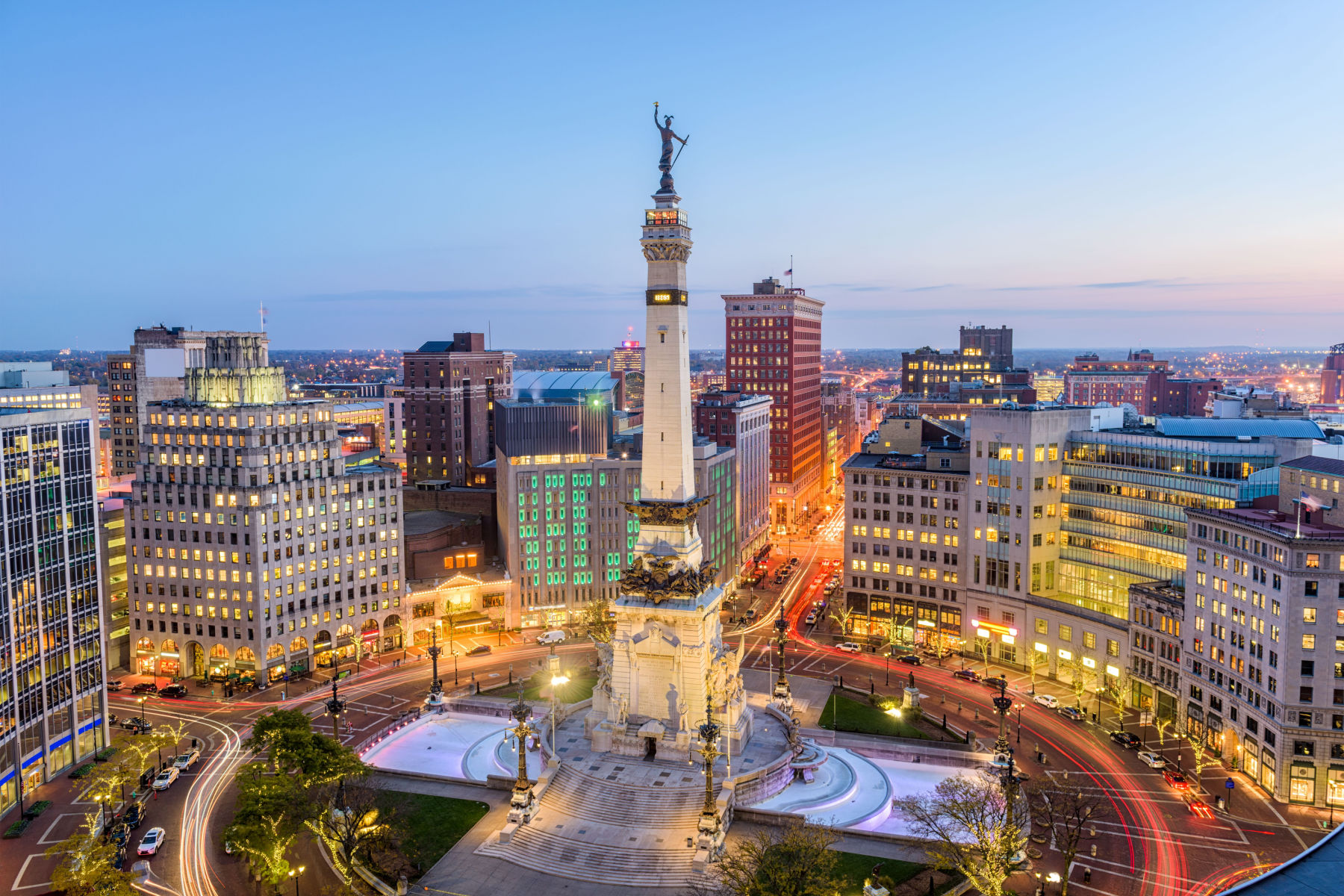
3. Indianapolis Museum of Art
Our next Indianapolis landmark has a rich history dating back to the late 19th century. At #3 on our list of the Best Indianapolis Landmarks is the Indianapolis Museum of Art.
The museum was founded in 1883 as the Art Association of Indianapolis, with the goal of bringing high-quality art to the city. Its first location was a small space in the city’s Commercial Club Building.
In 1906, the association received a major gift from local philanthropist John Herron, who donated his entire collection of art to the organization. This gift included works by important American and European artists, and it formed the foundation of the museum’s permanent collection.
In 1927, the Art Association of Indianapolis merged with the John Herron Art Institute to form the John Herron Museum of Art. The museum continued to grow over the following decades, and in 1969, it moved to its current location on a 152-acre campus in the city’s northwest side.
In 2005, the museum was renamed the Indianapolis Museum of Art, reflecting its expanded mission to include a wider range of art and programming. In recent years, the museum has undergone several major renovations and expansions, including the addition of a new contemporary art wing and the creation of a 100-acre park on its grounds.
Today, the Indianapolis Museum of Art is one of the largest and most respected art museums in the United States, with a collection of over 54,000 works from around the world. It is a vibrant cultural center for the city of Indianapolis and a popular destination for visitors from around the world.
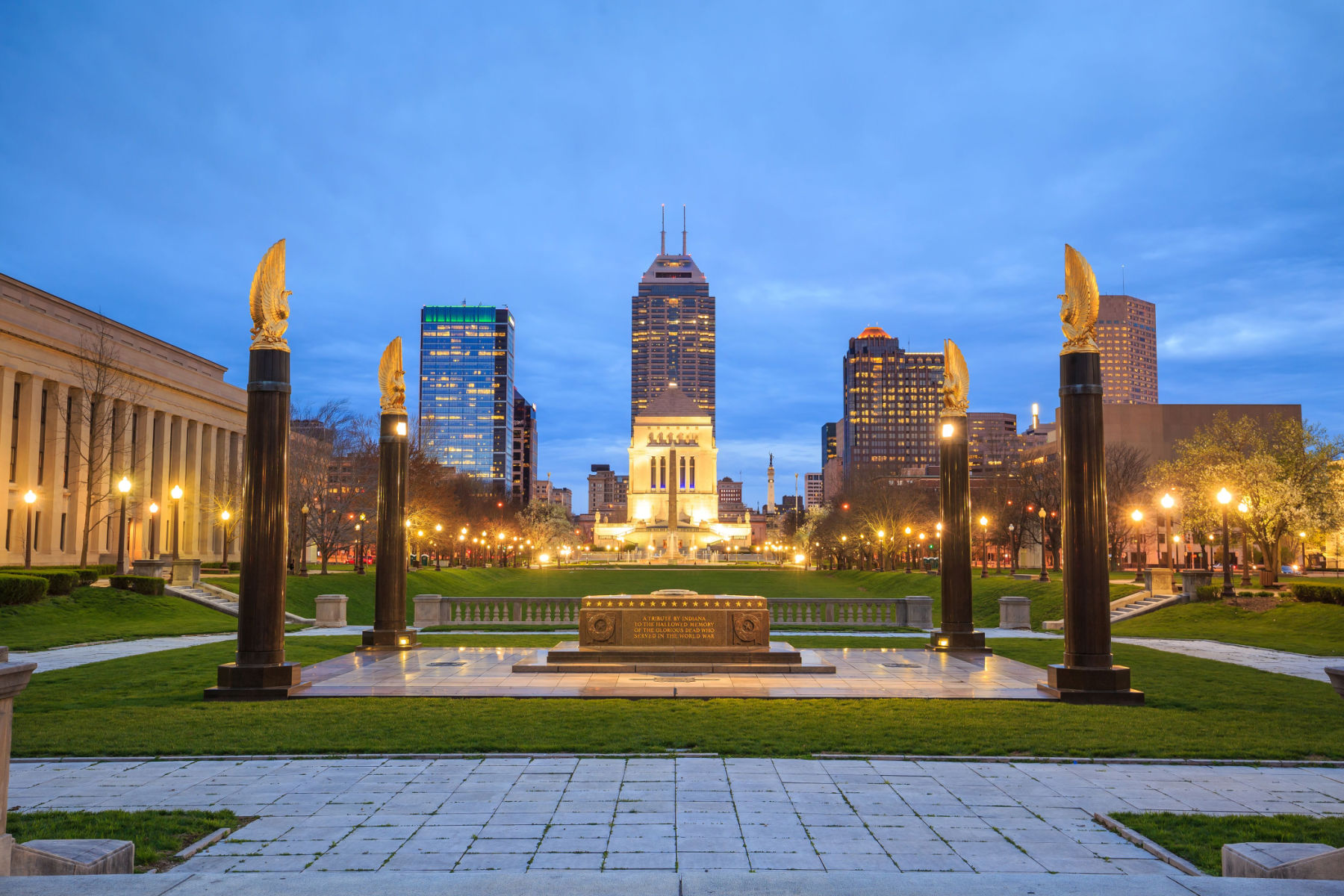
2. Indianapolis Motor Speedway
Our next Indianapolis landmark is the third-oldest permanent automobile race track in the world, behind Brooklands and the Milwaukee Mile. With a permanent seating capacity of 257,325, it is the highest-capacity sports venue in the world.
At #2 on our list of the Best Indianapolis Landmarks is the Indianapolis Motor Speedway.
The track was originally built in 1909 as a testing ground for the growing automobile industry. Its founders, Carl G. Fisher, James A. Allison, Arthur C. Newby, and Frank H. Wheeler, saw the potential for using the track as a venue for automobile racing, and the first Indianapolis 500 race was held in 1911.
The early years of the Indianapolis 500 were marked by tragedy and innovation. The track was made of bricks, earning it the nickname “The Brickyard,” and the rough surface led to many accidents. In response, the track was paved with asphalt in 1937, making it faster and safer.
During World War II, the Indianapolis Motor Speedway was closed to racing and used as a manufacturing site for military aircraft engines. After the war, the track was reopened and quickly became one of the premier racing venues in the world, hosting a wide range of events in addition to the Indianapolis 500.
Over the years, the Indianapolis Motor Speedway has undergone numerous renovations and improvements, including the addition of new grandstands and the installation of state-of-the-art safety features.
It remains one of the most iconic racing tracks in the world, with a rich history and a bright future as a center of innovation and excitement in the world of motorsports.
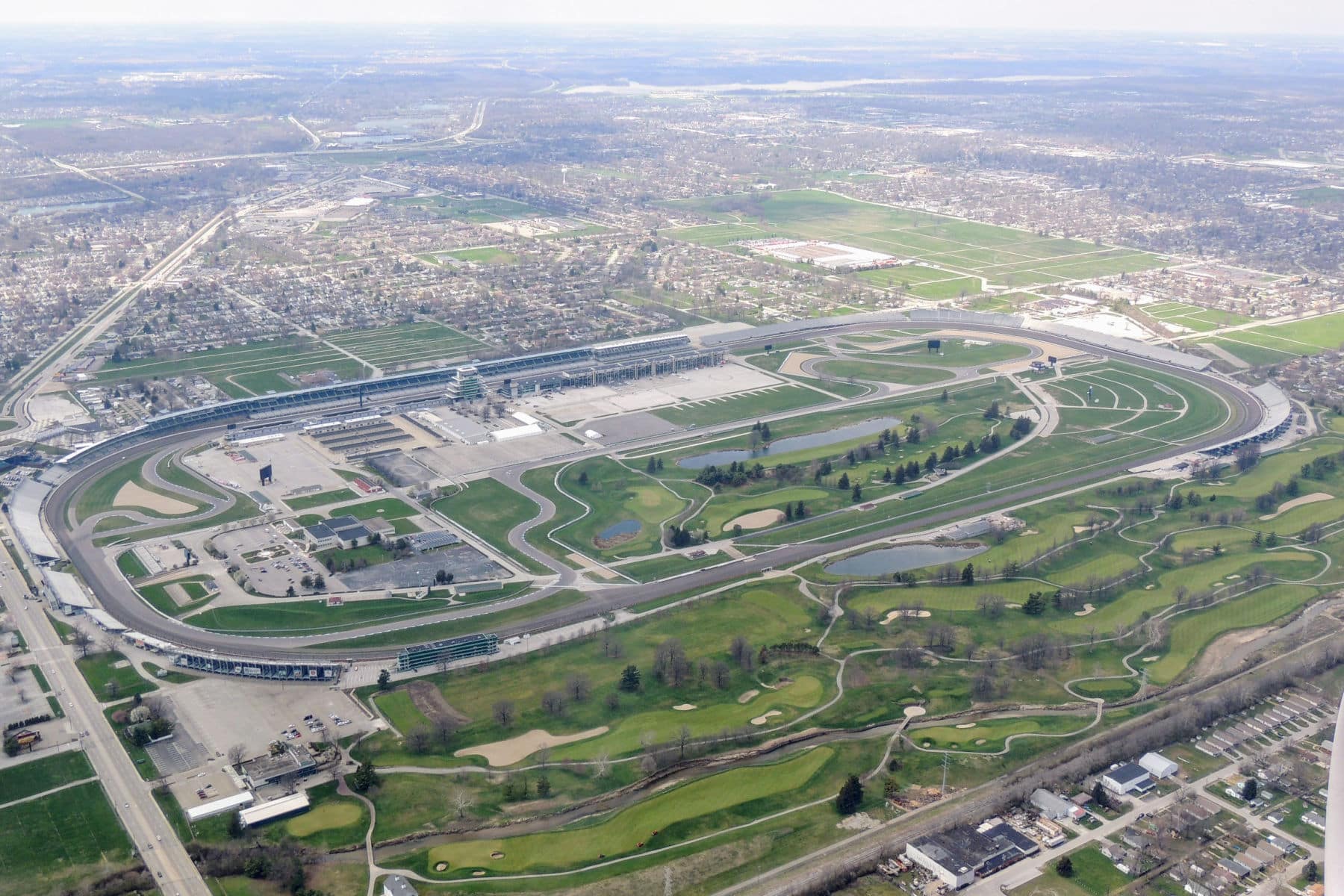
1. Indiana War Memorial
As the #1 Indianapolis landmark, More Than Just Parks has selected the Indiana War Memorial.
The monument was erected in honor of the Indiana soldiers and sailors who served in the American Civil War and later conflicts.

The Idea For A Monument
The idea for the monument was first proposed in the late 19th century, but it was not until the early 20th century that plans for its construction were finalized. The monument was designed by German-born architect Bruno Schmitz, who was also responsible for designing several other notable war memorials in the United States and Europe.
Construction on the monument began in 1888 and was completed in 1901, at a cost of over $600,000. The monument is constructed of Indiana limestone and stands 284 feet tall, making it one of the tallest war memorials in the United States.
The monument features a number of decorative elements, including several bronze statues representing the various branches of the military, as well as depictions of several important Civil War battles. The interior of the monument houses a museum and observation deck, which offers panoramic views of downtown Indianapolis.
Over the years, the Soldiers & Sailors Monument has become an important symbol of Indiana’s military heritage and a beloved landmark for residents of Indianapolis. It has also been the site of numerous public events and ceremonies, including parades, concerts, and political rallies.
Today, the monument is maintained by the Indiana War Memorials Commission, which is responsible for preserving and interpreting the state’s military history. It remains an important cultural institution and a significant part of Indiana’s heritage.
Map Of Indianapolis Landmarks
List Of Indianapolis Landmarks
- Indiana War Memorial
- Indianapolis Motor Speedway
- Indianapolis Museum of Art
- Monument Circle
- Indiana State Capitol
- Eiteljorg Museum of American Indians and Western Art
- Union Station
- Benjamin Harrison Presidential Site
- Central Canal
- Scottish Rite Cathedral
Why Trust Us About Indianapolis Landmarks?
We’re Jim Pattiz and Will Pattiz, collectively known as the Pattiz Brothers and we absolutely LOVE the national parks.
You should probably know that we don’t just make this stuff up out of thin air. We’ve spent our entire adult lives exploring and filming America’s national parks and public lands.
We’ve worked with the National Park Service, the Department of Interior, USDA, U.S. Forest Service, and more for years creating films on important places and issues. Our work has been featured in leading publications all over the world and even some people outside of our immediate family call us experts on the national parks.
And, in 2018, our father – having spent a lifetime teaching history – joined us so that he could help us to tell the stories behind these amazing places.
Meet The Parks Brothers
We Hope You’ll Follow Our Journey

Our goal here at More Than Just Parks is to share the beauty of America’s national parks and public lands through stunning short films in an effort to get Americans and the world to see the true value in land conservation.
We hope you’ll follow our journey through the parks and help us to keep them the incredible places that they are. If you’re interested in joining the adventure then sign up below!
Related Links
What Is A National Park? To learn more about the difference between the various National Park Service designations check out our article that explains everything!
Indiana National Parks: 4 EPIC Indiana National Parks You Should See
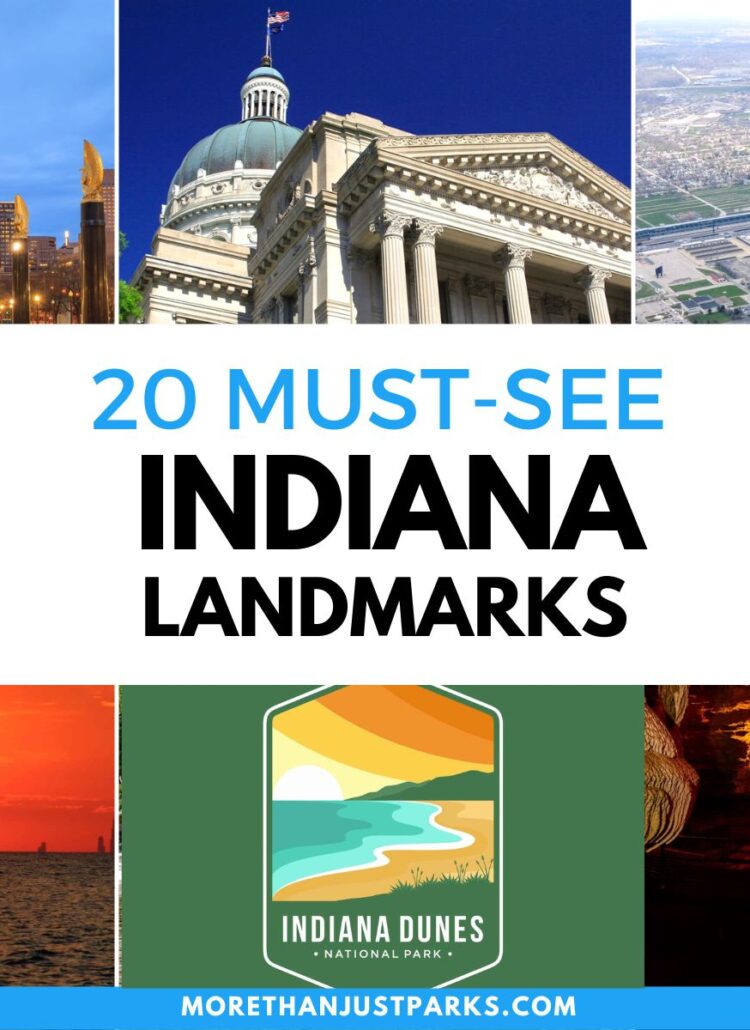
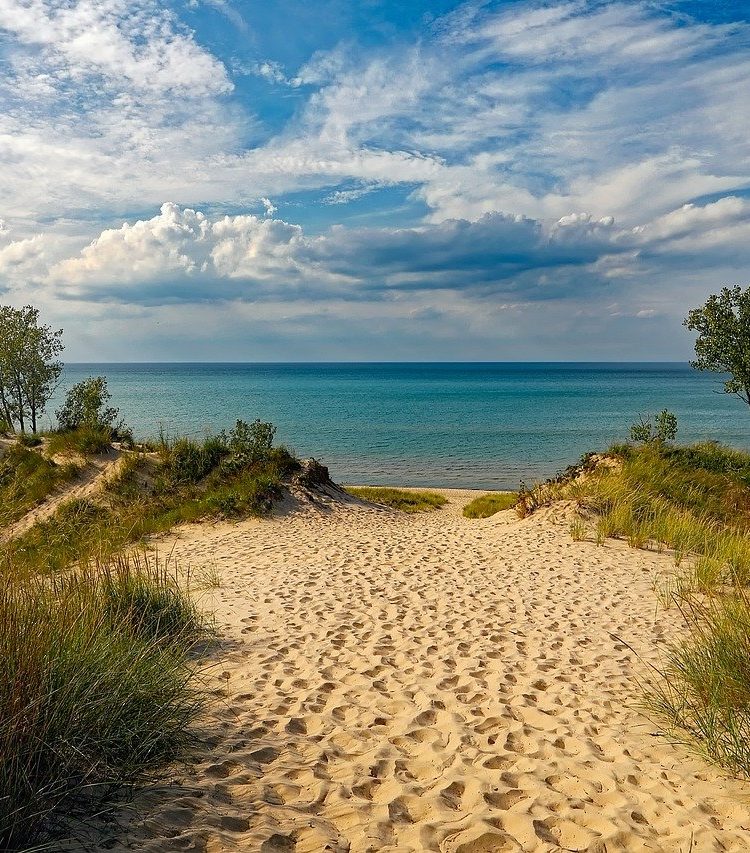
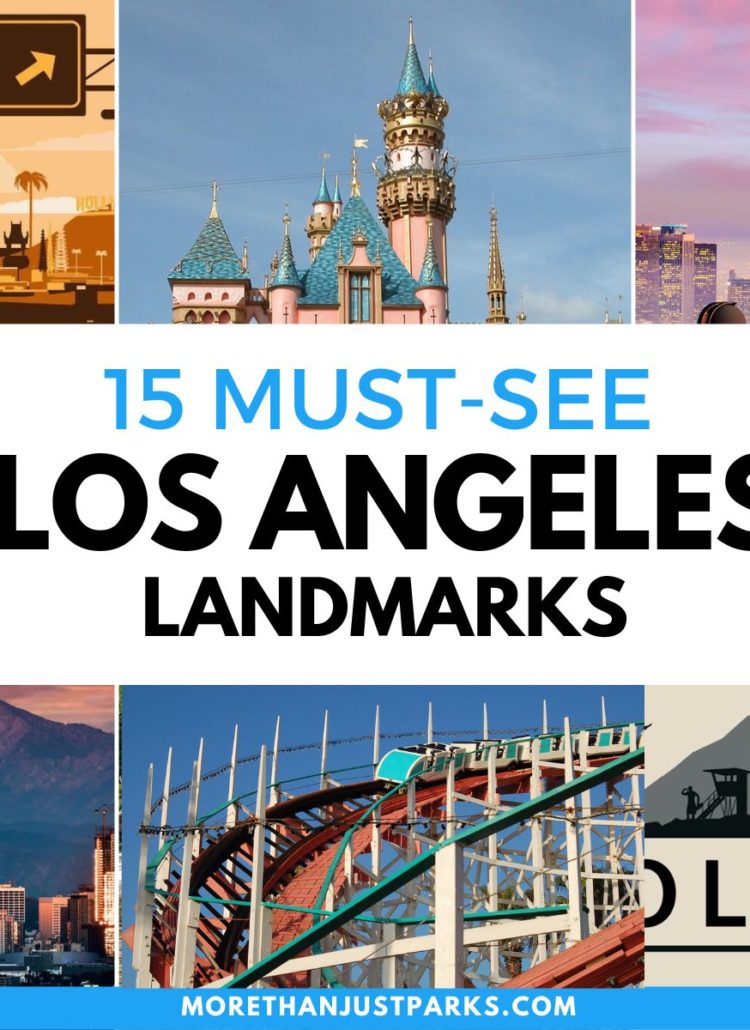
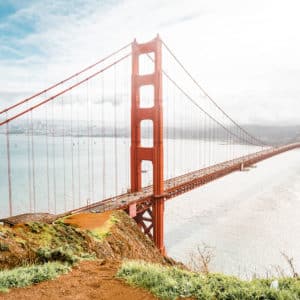

Leave a Reply